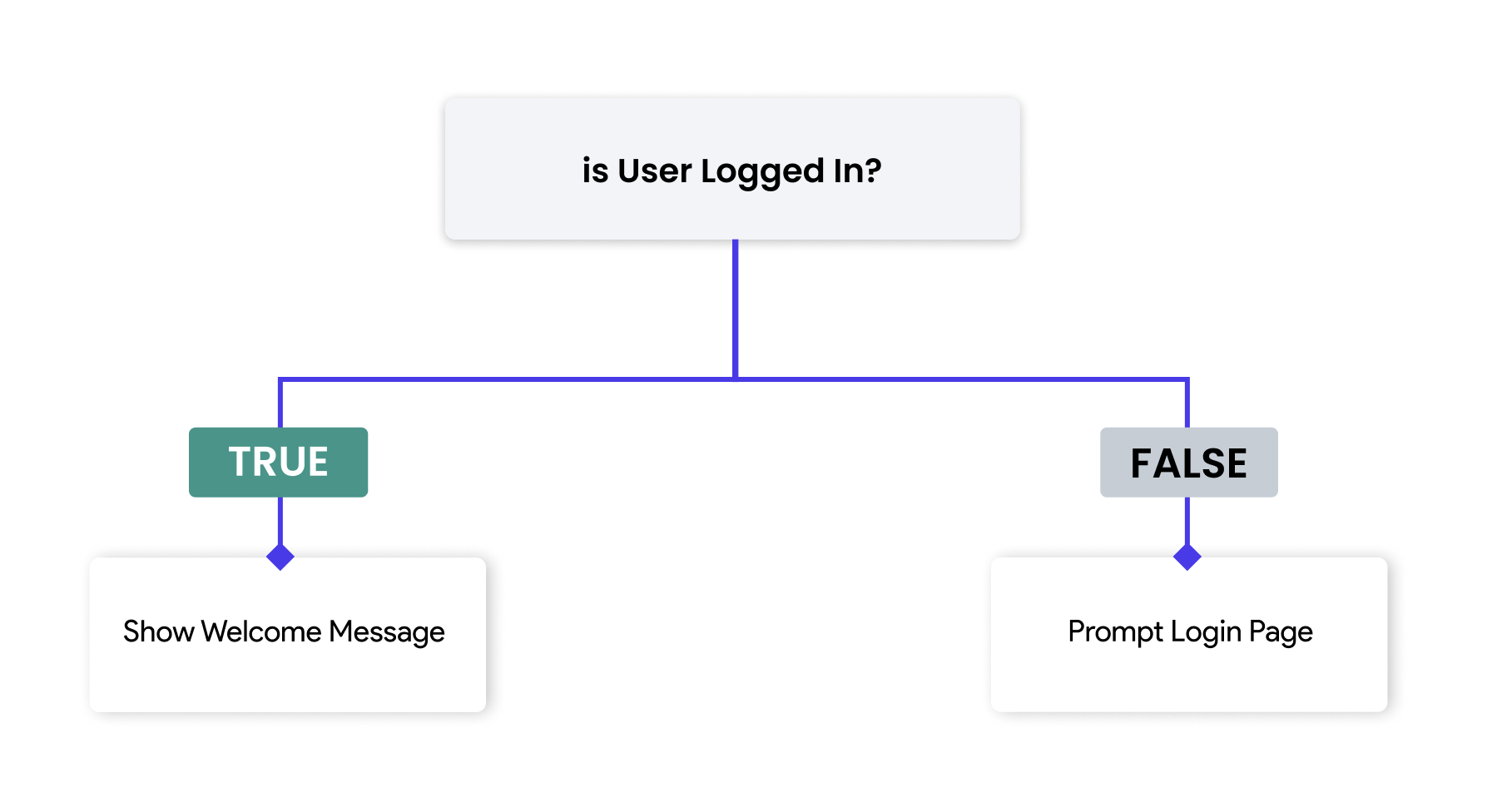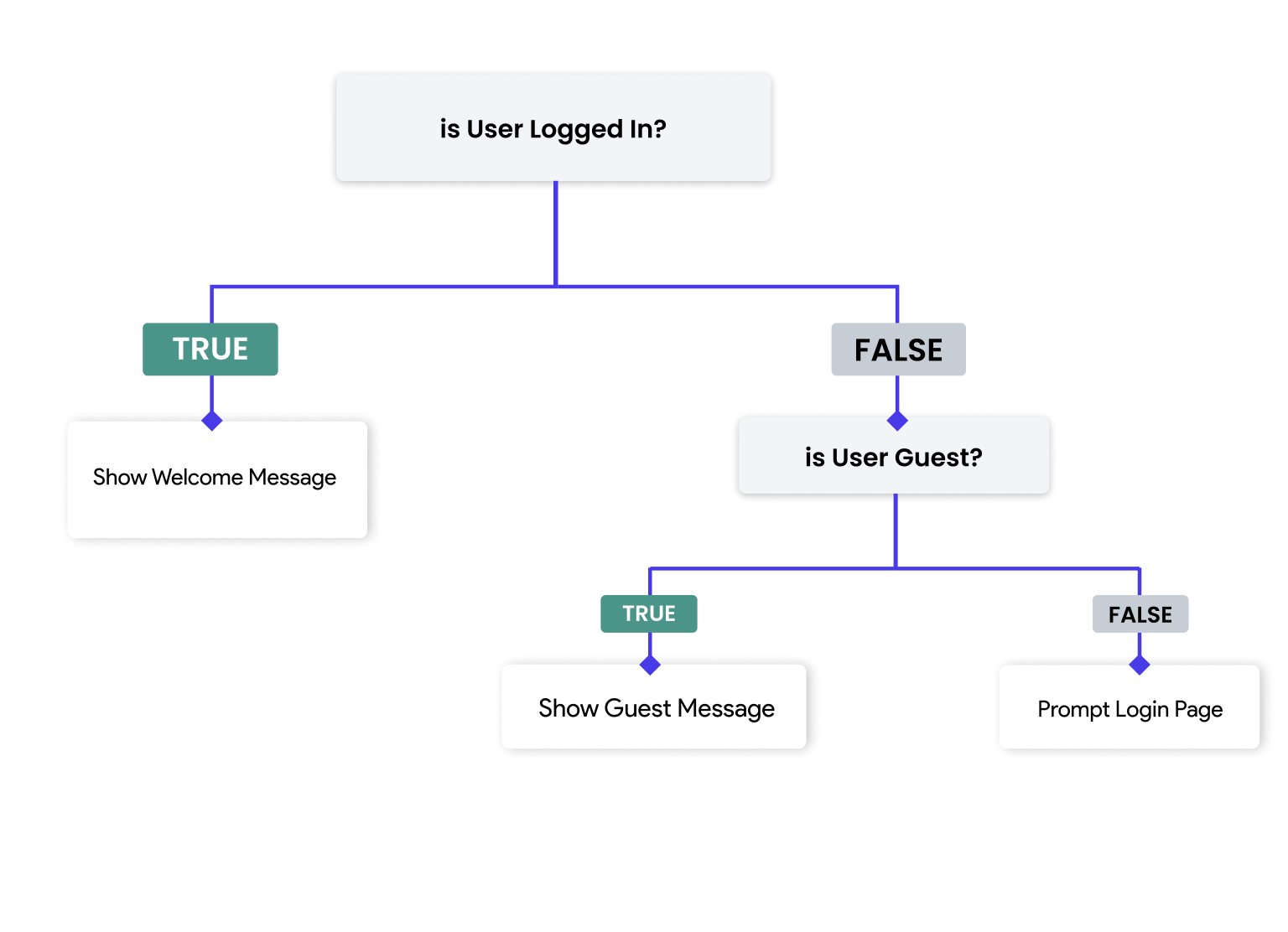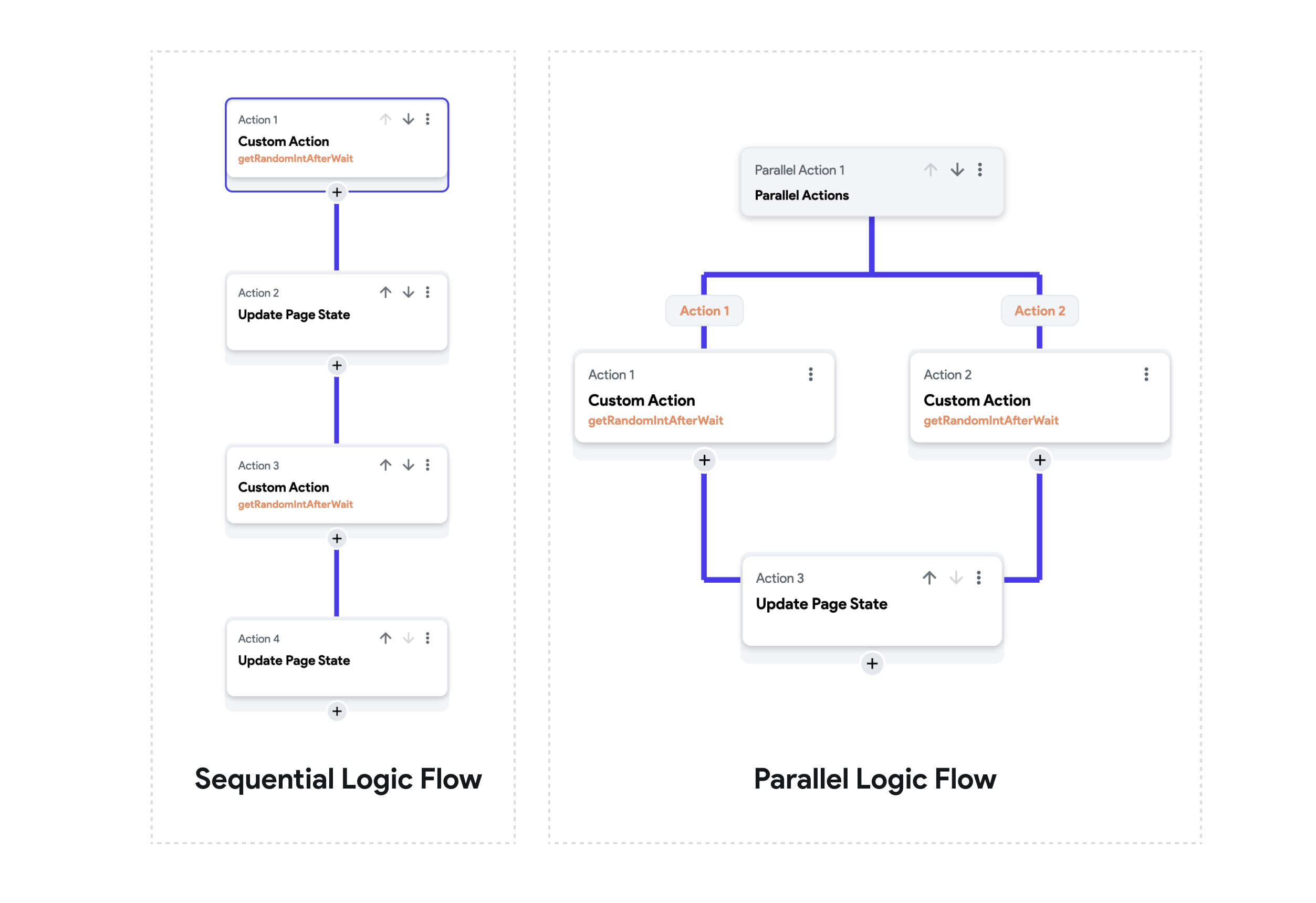Control Flow Concepts
In app development, control flow refers to the order in which individual statements, instructions, or function calls are executed or evaluated. Proper control flow ensures that your app behaves as expected under various conditions and user interactions. This involves understanding and implementing conditionals, managing sequential and parallel logic flows, handling blocking and non-blocking actions, and deciding when and how to execute specific actions based on certain criteria.
In this section, we will explore various control flow concepts and how they can be effectively implemented in FlutterFlow to create dynamic, responsive, and efficient applications.
Conditional
One of the fundamental aspects of control flow is the use of conditionals, which allow your app to make decisions and execute different blocks of code based on specific criteria. Conditional statements are expressions that evaluate to either true or false. Depending on the result of these evaluations, different logic sequences are executed.
The primary conditional statements are if, if-else, and else.
ifStatement: The if statement evaluates a condition and executes a block of code if the condition is true.
The if statement evaluates a condition and executes a block of code if the condition is true.

if-elseStatement:
The if-else statement provides an alternative block of code to execute if the condition is false.

Here, if userIsLoggedIn is true, the app will show a welcome message. Otherwise, it will prompt the user to log in.
else ifStatement:
The else if statement can be used to check multiple conditions sequentially.

This example demonstrates multiple conditions. If userIsLoggedIn is true, it shows a welcome message. If not, it checks if userIsGuest is true and shows a guest message. If neither condition is met, it prompts the user to log in.
Implementing Conditionals
In FlutterFlow, you can implement conditional logic in two primary ways:
-
In FlutterFlow, you can set properties of widgets conditionally. For example, you might want to change the color of a button based on a variable's value. You can use conditional expressions to dynamically set these properties during runtime.
-
You can also perform conditional actions in FlutterFlow, where certain actions are executed only if specified conditions are met. This is useful for implementing logic like navigating to different pages based on user input or showing/hiding widgets.
Example: If the user clicks a button and a form is valid, navigate to the next screen; otherwise, show an error message.
Check out the complete guide here. Are you looking to learn about implementing conditional UI instead? Check out our Responsiveness 101 guide instead.
Sequential vs Parallel Logic Flow
-
Sequential Logic Flow: Actions are executed one after the other. Each action waits for the previous one to complete before starting. This is useful for tasks that depend on the outcome of previous actions.
Example: Submitting a form, waiting for a server response, and then showing a confirmation message.
-
Parallel Logic Flow Multiple actions are executed at the same time, independently of each other. This is useful for tasks that can be done simultaneously and do not depend on each other's outcomes.
Example: Loading data from multiple sources simultaneously to speed up the data fetching process.

Asynchronous Functions
Asynchronous functions are operations that do not complete immediately and may finish at a future time due to network delays or long computation times.
They can be made blocking or non-blocking depending on the use case. Some examples of asynchronous operations include:
- Network requests (e.g., fetching data from an API)
- Database operations (e.g., reading or writing data)
- Long-running computations (e.g., complex calculations)
- Animations (e.g., transitions, widget animations)
Blocking Actions
Blocking actions are actions that halt the execution of subsequent actions until they are completed. These actions typically involve operations that take time, such as network requests or animations.
In the generated code, FlutterFlow uses the await keyword to pause the execution of an
asynchronous function until the operation completes before proceeding to the next
function. This approach is commonly used to handle asynchronous functions, ensuring that each operation finishes before the subsequent one begins.
In the following example from generated code, the code awaits on actions.getRandomIntAfterWait() because it is an asynchronous function that takes around 2 seconds to complete and provide a result (in this case, a random integer).
_model.result = await actions.getRandomIntAfterWait();
_model.text1Value = _model.result.toString();
The result of the actions.getRandomIntAfterWait() is stored in model.result variable and
then the result then set to a Text widget using the Page State variable text1Value.
Non-Blocking Actions
Non-blocking actions, on the other hand, allow the program to continue executing other subsequent tasks while waiting for the initial actions to complete in the background.
In the generated code, when an asynchronous function is made non-blocking, FlutterFlow removes the await keyword. This means the subsequent function will not wait for the asynchronous action to complete and will move to the next action immediately.
The previous example will no longer work because it doesn't await the asynchronous function
actions.getRandomIntAfterWait(). As a result, the variable model.result may not be
ready or available when _model.text1Value = _model.result.toString(); is executed.
_model.result = actions.getRandomIntAfterWait();
_model.text1Value = _model.result.toString(); // will throw errors
To ensure proper execution, make only those actions non-blocking whose subsequent actions do not depend on the results from these initial functions.
Non-Blocking vs Parallel Actions
| Non-Blocking Actions | Parallel Actions |
|---|---|
| Allows the subsequent action to run immediately after the current one without waiting for the current action to complete. | Allows users to run two or more actions at the same time independently. |
| Only asynchronous functions can be made non-blocking. | Both asynchronous and synchronous functions can be included in parallel actions. |
| Ideal for tasks where the result of the action is not immediately needed by the next action. | Ideal for independent tasks that can be executed simultaneously to improve efficiency. |
| Ensures the app remains responsive by not waiting for long-running tasks. | Helps in reducing overall execution time by performing multiple tasks concurrently. |
| Example: Fetching data in the background while allowing user interaction. | Example: Loading data from two APIs simultaneously to save time. |